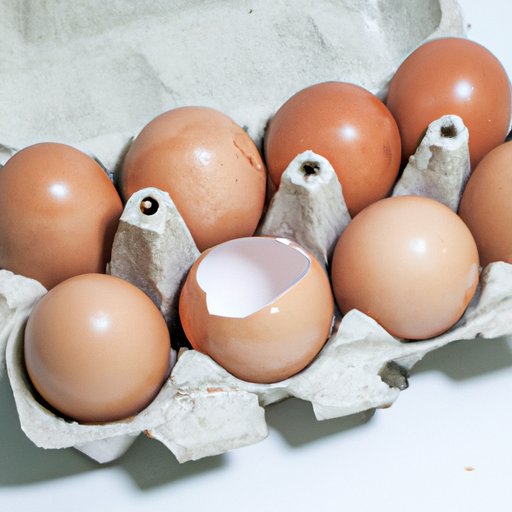
I. Introduction
Eggs are a common ingredient in many recipes. They’re versatile, nutritious, and delicious. However, it’s important to know how to check if eggs are bad to avoid food poisoning. In this article, we’ll cover several methods for checking egg freshness and provide tips for preventing spoilage. By the end of this article, you’ll feel confident in your ability to determine whether or not an egg is safe to eat.
II. Look and Smell Test
The most basic way to check if an egg is fresh is to use your senses. Visually inspect the egg to make sure the shell is clean and free of cracks. Then, give it a sniff. Fresh eggs should have a neutral smell. If the egg smells sour or rotten, it’s likely spoiled.
Other signs of spoilage to look for include discoloration, a cloudy appearance, or a loose yolk. If any of these are present, the egg should be discarded.
III. Water Test
The water test is a simple way to determine egg freshness. Fill a bowl with cool water and gently place the egg in it. If the egg sinks to the bottom and lays flat on its side, it’s fresh. If it sinks but stands upright or tilts, it’s a few days old but still good to eat. If it floats to the top, it’s gone bad and should be thrown away.
IV. Candle Method
The candle method is one of the most reliable ways to check egg freshness. Hold a flashlight or candle behind the egg in a dark room. Fresh eggs will have a round, clear yolk and a thick egg white. If you notice any air pockets or cloudy spots, the egg is starting to spoil.
This method is advantageous because it doesn’t require the egg to be cracked open, so it won’t go to waste if it’s still fresh.
V. Float Test
The float test is similar to the water test, but it’s more sensitive. Fill a tall glass with cold water and gently place the egg in it. A fresh egg will sink to the bottom of the glass and rest on its side. An egg that’s a week or two old will sink, but its large end will rise slightly. An egg that’s gone bad will float to the top.
VI. Crack Test
The crack test is another easy way to check an egg’s freshness. Crack the egg onto a plate or bowl and look at the yolk. A fresh egg will have a round, compact yolk, while an older egg will have a flatter, more spread-out yolk. If the egg has a strong odor or unusual color, it’s gone bad and should be thrown away.
VII. Date Test
It’s important to keep track of the expiration dates on egg cartons or packages. Eggs can last up to five weeks in the refrigerator, but their freshness decreases over time. To keep eggs fresh for longer, store them in the coldest part of the fridge and keep them in their original carton.
If there are any cracks or damages on the eggshell, it could increase the chances of it going bad faster. Avoid washing the eggs until you are ready to use them since this can remove the natural barrier that keeps bacteria out.
VIII. Trust Your Instincts
If you’re unsure whether or not an egg is safe to eat, always err on the side of caution. Don’t eat an egg that smells or looks off, even if it passes all the tests. Symptoms of food poisoning can include diarrhea, vomiting, fever, and abdominal pain. If you experience any of these symptoms after eating an egg, seek medical attention immediately.
IX. Conclusion
Checking egg freshness is an important part of food safety. By using the methods outlined in this article, you can ensure that you are consuming fresh, healthy eggs. Remember to always check the expiration date, store eggs properly, and trust your instincts when in doubt.





